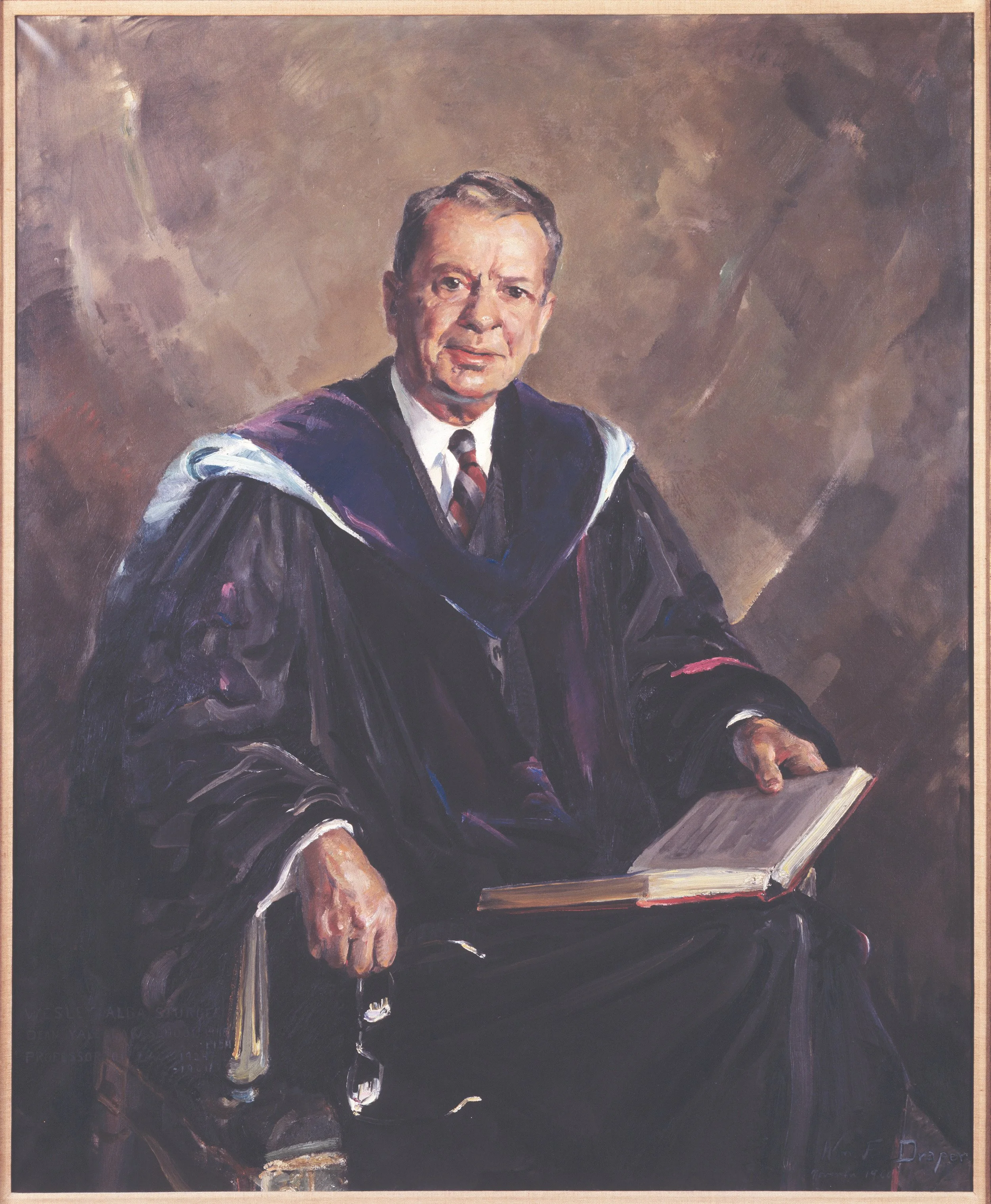Wesley A. Sturges, Edward J. Phelps Professor of Law, 1924-61
Wesley A. Sturges
REFERENCES:
Laura Kalman, Legal Realism at Yale 1927-1960 (1986).
“Wesley Sturges, Educator, 69, Dies,” N.Y. Times, Nov. 11, 1962, at 88
4 Who Was Who in America 916 (1968).
Wesley Alba Sturges (1893-1962), an alumnus of the Law School (1923), was one of the most popular teachers on the faculty of his day and served as dean of the Law School from 1945-54. He retired from Yale in 1961 to become dean of the University of Miami Law School.
A prominent figure in Yale’s Legal Realist movement of the 1930s, Sturges wrote on a range of commercial topics, including bankruptcy, arbitration, and credit transactions. In a well-known article, “Legal Theory and Real Property Mortgages,” 37 Yale L. J. 691 (1928), Sturges (with Samuel Clark) demonstrated that doctrinal distinctions between “lien theory” and “title theory” had no impact on how courts ruled in mortgage disputes. His casebook, Cases and Materials on the Law of Credit Transactions (1936), embodied the Realist functional approach to law, organizing cases in the way a practicing lawyer would approach problems and combining what were previously separate courses in bankruptcy, mortgages and suretyship, into one course on the credit system.
The casebook on Credit Transactions also highlighted contradictions in judicial decisionmaking. It served to further the Realist world view that Sturges found lacking in other casebooks emphasizing “general principles,” which he criticized for “leaving [students] ignorant of the fact that they will be concerned with judges who behave as human beings in deciding cases, … overstimulat[ing] them with confidence that a deduction from what judges said in one case with its setting can be used to fix what they will decide in another case,” and “isolat[ing] into chapter-compartments parts of a single business operation as it is understood in business practice.” “Book Review,” 40 Harv. L. Rev. 510, 513 (1926).
Sturges’ work on bankruptcy included his textbook Cases and Materials on the Law of Administration of Debtors’ Estates (1933), and an important article, “A Proposed State Collection Act,” 43 Yale L. J. 1055 (1934), in which he proposed a blanket rule to give earlier commercial creditors priority over subsequent ones, in order to minimize the risk of creditors lending to an already overburdened lender. He was also influential in the growth of arbitration, publishing Commercial Arbitrations and Awards (1930) and Cases on Arbitration Law (1953), and serving as president of the American Arbitration Association.
A scholarship fund was established in his honor at the Law School in 1954.
